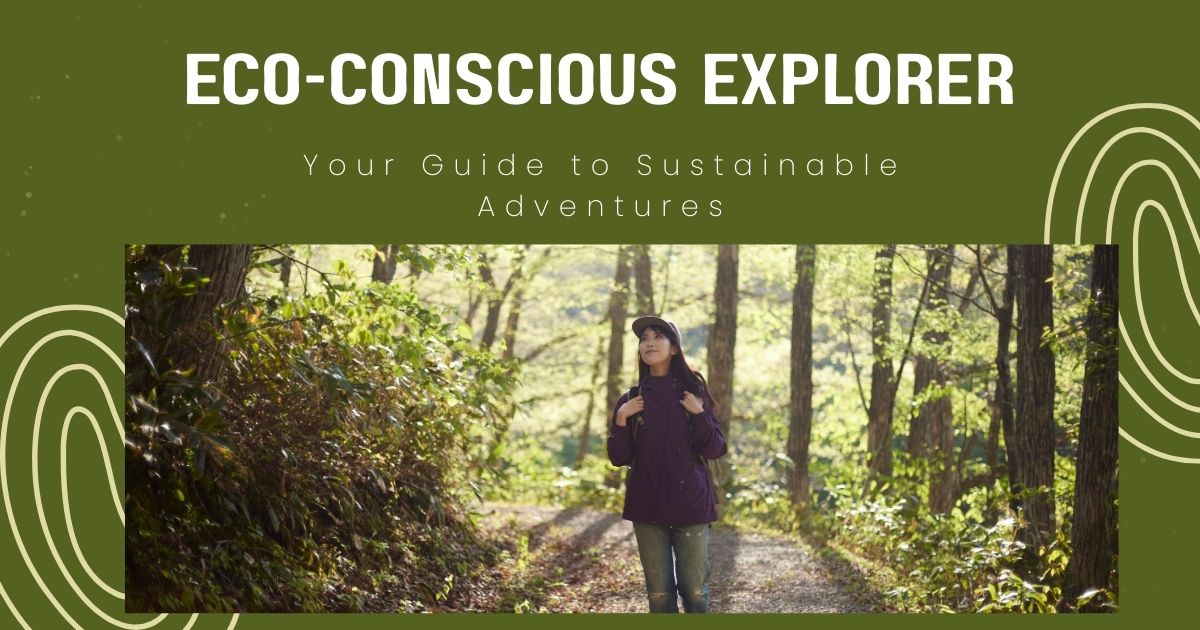
Travel opens our minds to new cultures, breathtaking landscapes, and unforgettable experiences. Yet the harsh reality is that tourism contributes approximately 8% of global carbon emissions, leaving many wanderlust-filled hearts questioning how to explore responsibly.
The solution isn’t to stop traveling altogether. Instead, becoming an eco-conscious explorer allows you to satisfy your desire for adventure while minimizing your environmental impact. This comprehensive guide will show you how to transform your travel habits, make sustainable choices, and discover destinations that benefit both you and the planet.
Whether you’re planning your first sustainable trip or looking to refine your existing eco-friendly practices, you’ll find actionable strategies to make every journey more meaningful and environmentally responsible.
Understanding the Environmental Impact of Travel
Before diving into solutions, it’s crucial to understand how travel affects our planet. Transportation accounts for the largest portion of tourism’s carbon footprint, with aviation alone responsible for about 2.5% of global CO2 emissions. Hotels, restaurants, and tourist activities add additional layers of environmental impact through energy consumption, waste generation, and resource depletion.
The concept of an eco-conscious explorer isn’t about eliminating these impacts entirely—that’s neither realistic nor necessary. Instead, it’s about making informed decisions that significantly reduce your environmental footprint while still allowing you to experience the world’s wonders.

Choosing Sustainable Transportation Options
Flying Smart, Not Less
Air travel remains the fastest way to reach distant destinations, but eco-conscious explorers can minimize their impact through strategic choices. Direct flights produce fewer emissions than connecting flights, as takeoffs and landings consume the most fuel. When possible, choose economy class over business or first class, as these sections have a larger carbon footprint per passenger.
Consider purchasing carbon offsets for unavoidable flights, but research offset programs carefully. Look for Gold Standard or Verified Carbon Standard certifications to ensure your investment genuinely contributes to emission reductions.
Ground Transportation Alternatives
For shorter distances, trains often provide the most sustainable option. High-speed rail networks in Europe and Asia offer comfortable, efficient alternatives to short-haul flights. Electric buses and hybrid vehicles are becoming increasingly available for medium-distance travel.
When renting cars, opt for hybrid or electric vehicles when available. Many rental companies now offer eco-friendly options, and the infrastructure for electric vehicle charging continues to expand globally.

Selecting Eco-Friendly Accommodations
Green Certifications to Look For
Not all “eco-friendly” hotels live up to their claims. Look for legitimate certifications such as LEED, Green Key, or EarthCheck. These programs require hotels to meet specific environmental standards regarding energy efficiency, water conservation, waste management, and sustainable practices.
Alternative Accommodation Types
Consider staying in locally-owned guesthouses, eco-lodges, or certified sustainable hotels rather than large international chains. These options often have smaller environmental footprints and contribute more directly to local economies.
Vacation rentals can also be sustainable choices, particularly if you’re traveling with a group. Apartments and homes typically use less energy per person than hotels and allow you to prepare your own meals, reducing packaging waste from restaurant dining.
Sustainable Packing Strategies
Essential Items for Eco-Conscious Explorers
Pack a reusable water bottle, bamboo utensils, and cloth shopping bags to reduce single-use plastic consumption. Solid shampoo and soap bars eliminate plastic packaging while taking up less space in your luggage.
Bring a portable solar charger for electronic devices, especially useful during outdoor adventures or in areas with limited electricity access. Quick-dry, versatile clothing items reduce the need for frequent laundry and allow you to pack lighter.
Minimalist Packing Philosophy
The eco-conscious explorer embraces minimalist packing principles. Lighter luggage means lower fuel consumption during transportation. Choose versatile clothing pieces that can be mixed, matched, and layered for different weather conditions and occasions.
Pack only what you genuinely need, and resist the urge to overpack “just in case” items. This approach not only reduces environmental impact but also makes traveling more convenient and enjoyable.
Responsible Destination Selection
Supporting Conservation Efforts
Choose destinations that actively protect their natural environments and support conservation initiatives. Many national parks and protected areas use tourism revenue to fund wildlife protection and habitat preservation programs.
Research destinations that practice sustainable tourism management, such as limiting visitor numbers to sensitive ecosystems or implementing community-based tourism programs that benefit local residents.
Off-Season and Alternative Destinations
Traveling during off-peak seasons reduces crowding at popular destinations and often results in lower emissions due to more efficient transportation utilization. Consider exploring lesser-known alternatives to overtouristed destinations—these locations often offer equally rewarding experiences with significantly less environmental impact.

Engaging in Responsible Activities
Wildlife Encounters Done Right
When seeking wildlife experiences, choose operators that prioritize animal welfare and conservation. Avoid attractions that exploit animals for entertainment, such as elephant rides or swimming with captive dolphins.
Support wildlife sanctuaries and conservation projects that focus on rehabilitation and protection rather than entertainment. Many destinations offer opportunities to participate in citizen science projects or volunteer with conservation organizations.
Cultural Sensitivity and Local Engagement
The eco-conscious explorer respects local cultures and customs while supporting community-based tourism initiatives. Purchase souvenirs directly from local artisans rather than mass-produced items, and choose locally-owned restaurants and guides.
Learn basic phrases in the local language and familiarize yourself with cultural norms before arriving. This preparation shows respect for local communities and enhances your travel experience.
Sustainable Dining and Shopping
Eating Like a Local
Embrace local cuisine and seasonal ingredients to reduce the carbon footprint of your meals. Street food and local markets often provide the most authentic and sustainable dining experiences while supporting small-scale vendors.
Choose restaurants that source ingredients locally and practice sustainable food preparation methods. Many destinations now feature farm-to-table restaurants that showcase regional specialties while minimizing transportation emissions.
Conscious Souvenir Shopping
Support local economies by purchasing handmade crafts and locally-produced goods rather than mass-manufactured souvenirs. Avoid items made from endangered species or unsustainable materials such as coral, ivory, or certain hardwoods.
Consider purchasing experiences rather than physical items—cooking classes, guided nature walks, or cultural performances create lasting memories without adding to your luggage or environmental impact.
Planning Your Eco-Conscious Adventures
Research and Preparation
Thorough research forms the foundation of sustainable travel. Use resources like the Global Sustainable Tourism Council’s destination directory to identify certified sustainable destinations and accommodations.
Connect with local tourism boards and conservation organizations to learn about ongoing environmental initiatives you can support during your visit. Many destinations offer volunteer opportunities that allow travelers to contribute meaningfully to conservation efforts.
Technology Tools for Sustainable Travel
Leverage smartphone apps and websites designed to support sustainable travel. Apps like HappyCow help locate vegetarian and vegan restaurants, while others can help you find public transportation routes and bike-sharing programs.
Use digital maps and guides instead of printed materials when possible, and choose electronic tickets over paper versions for flights, trains, and attractions.
Making a Lasting Impact Beyond Your Trip
The journey of an eco-conscious explorer doesn’t end when you return home. Share your sustainable travel experiences through social media, blogs, or travel forums to inspire others to adopt similar practices. Your stories can motivate friends and family to consider the environmental impact of their own travel choices.
Continue supporting the destinations and conservation efforts you encountered during your travels through ongoing donations or advocacy. Many organizations offer ways to stay connected and contribute to ongoing conservation work from afar.
Consider how your travel experiences can influence your daily life at home. The mindfulness and environmental awareness you develop as an eco-conscious explorer often translate into more sustainable practices in your everyday routine.
The path to becoming an eco-conscious explorer requires intentional planning and mindful decision-making, but the rewards extend far beyond personal satisfaction. Your thoughtful approach to travel helps preserve the destinations you love for future generations while supporting local communities and conservation efforts. Start with small changes on your next trip, and gradually incorporate more sustainable practices as you become more comfortable with eco-friendly travel. The world’s natural wonders and cultural treasures will be there to welcome you—and countless future travelers—thanks to your conscious efforts to explore responsibly.

















No Comments